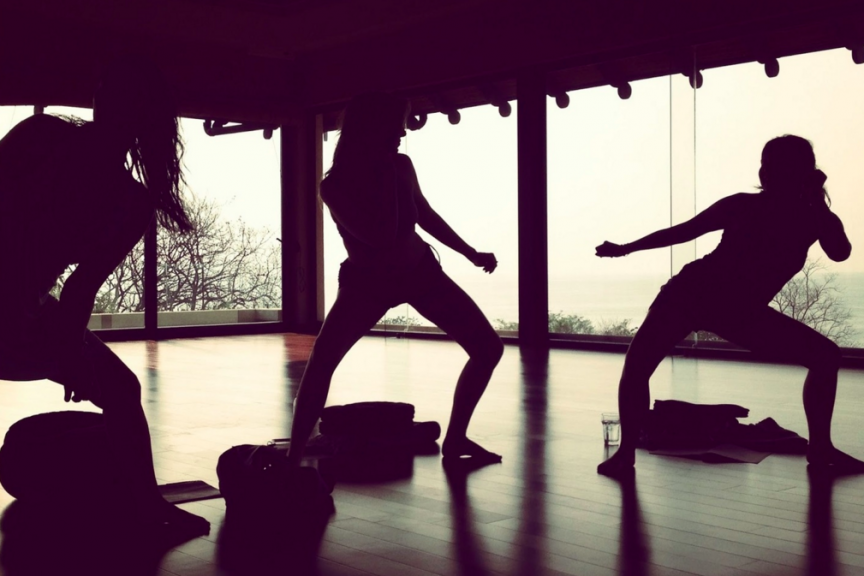The woman in front of me is dancing her pain, her grief, her anguish. She is so brave, so beautiful in her vulnerability that I have tears flooding down my face. Then it’s my turn and I feel a thick ball in my throat; my body pulls in on itself. My dance is ugly, sharp, spiky, uncoordinated, and disjointed but it’s mine and I own it.
I’m at my first Qoya class at Blush Love in Portugal. Part free dance, part yoga, part therapy, part sacred ceremony, part sensuality workout – you just can’t put Qoya in a box. It was developed by American dancer, yoga teacher and shaman, Rochelle Schieck who was looking for a way to help women get out of their heads and into their bodies. ‘It’s about teaching women how to feel again,’ she says. ‘It’s about remembering yourself in the deepest, most sacred way – wild, wise and free.’
Kate Taylor, one of a growing band of teachers in the UK, is adamant that this is not about looking good but about feeling good. ‘There’s absolutely no wrong way to do Qoya,’ she says.
This is dance for every woman who has ever felt she ‘can’t dance’. It’s yoga for every woman who has ever felt intimidated by the cult of skinny and superbendy. It’s therapy for those who wouldn’t know what to say to a therapist. ‘Using the body as an emotional guidance tool is incredibly powerful,’ says Kate. ‘Through each dance we enquire into a different layer of ourselves, or part of our psyche – using movement and the unconscious to answer any questions we may have that the conscious mind can’t always answer.’
Qoya means ‘goddess’ in Quechuan, and Kate spends time before each class creating sacred space so women can come into a place that feels safe for them to express all their emotions.
The movement starts slowly. First we’re invited to connect with our breathing and set an intention for the class. Kate then guides us through circling through each part of our body to release tension, before inviting us to open our hearts, and also our hips. ‘Slow down and tune into sensual movement,’ she says. ‘We release shame and shyness and tune into how good it feels.’
I relish the ease that comes into my body, as we sink into a series of simple sun salutes.
Next up comes Shadow Dance. ‘Dance what is holding you back,’ says Kate. ‘Dance how you feel when you can’t release.’ It’s the most challenging part of the class and, during my week at Blush Love, I danced out everything from anger, grief, shame and guilt. ‘We honour the challenges in our lives and dance with them, rather than pretending they are not there,’ says Kate.
Then we shake it all, releasing what no longer serves us. I dance for myself, feeling wide open, vulnerable yet free. And yes, I really do feel like a goddess. Then I turn back to my fellow dancers, my tribe, and am welcomed with broad smiles, gentle touches, eyes shining. It’s blissful; it’s beautiful.
A standard Qoya class costs around £15-25 and lasts for up to two hours.
